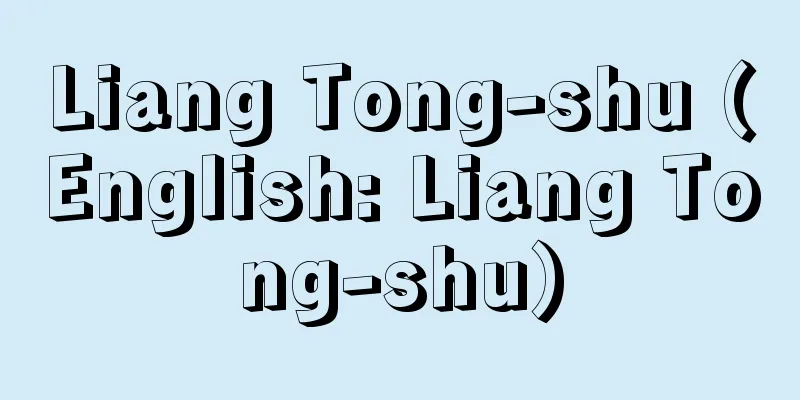Three booklets - Sanzoushi

|
This is a treatise on haiku poetry by Toho. It was completed in 1703 (Genroku 16) during Toho's later years. It consists of three parts: "White Booklet," "Red Booklet," and "Wasuremizu," of which "Wasuremizu" was renamed "Kuro Booklet" when it was published. It was published in 1776 (An'ei 5), 46 years after Toho's death, with a preface by Ranko. Toho's handwritten version has not been handed down to the present day. The contents of the book are as follows: First, the "White Booklet" explains in 29 sections such as the origins of renga and haikai, the historical significance of Basho's haikai, and the characteristics and methods of haikai. Next, the "Red Booklet" discusses fundamental issues in Basho-style haiku, such as the theory of immutability and fashion, the theory of elegance as sincerity, and the problem of light-hearted haiku. It also contains an explanation of the revision process of Basho's approximately 70 hokku verses, Basho's comments on the verses of his disciples, and commentary on approximately 40 of Basho's tsukeai (communication exchanges). In "Wasuremizu" (Wasure-mizu), it records Basho's words and actions, the etiquette of haiku sessions, and how to write shikishi tanzaku (strips of paper) in a memorandum-like style. This book was likely written with the intention of being a comprehensive book on haiku etiquette, following the example of Baio's "Haikai Mugonsho" (published in 1674), but as it was written by the devout Toho, who was a central figure in the Iga Basho school and studied under Basho throughout his life, it is filled with Basho's last words and teachings and contains logical descriptions that touch on the essence of Basho's style.In addition to providing insight into Basho's view of haiku, it is a valuable treatise on par with "Kyoraisho." [Minoru Horikiri] "Nose Asatsugu's 'Sansatsuko Commentary' (1954, Sanseido / reprinted in 'Nose Asatsugu Works Collection 10', 1981, Shibunkaku Publishing)" ▽ "Minami Shinichi's 'Sansatsuko General Commentary' (1964, Kazama Shobo)" ▽ "Kuriyama Riichi et al., annotated and translated 'Complete Works of Japanese Classical Literature 51: Renga (Renga), Nohgaku (Noh), Haiku (Haiku)" (1973, Shogakukan)" Source: Shogakukan Encyclopedia Nipponica About Encyclopedia Nipponica Information | Legend |
|
土芳(とほう)の俳諧(はいかい)論書。土芳晩年の1703年(元禄16)ごろ成立。『白冊子』『赤冊子』『忘れ水』の3部からなり、そのうち『忘れ水』は刊行の際『黒冊子』と改められている。土芳没後46年後の1776年(安永5)に闌更(らんこう)の序を添えて上梓(じょうし)された。土芳の自筆本は今日伝わらない。内容はまず『白冊子』に、連歌・俳諧の起源、芭蕉(ばしょう)俳諧の史的意義、俳諧の特質や式法など29項目にわたって説き、ついで『赤冊子』では、不易流行(ふえきりゅうこう)論、風雅の誠(まこと)説、軽みの俳風の問題など、蕉風俳諧の根本問題について論じ、また芭蕉の発句約70句の推敲(すいこう)過程の説明、門人の句に対する芭蕉の評、芭蕉の付合(つけあい)約40についての解説などを収め、『忘れ水』においては、芭蕉の言行、俳席の心得、色紙短冊のしたため方など、70項目の多方面にわたって備忘録風の教えを記録している。 本書は梅翁編の『俳諧無言抄(むごんしょう)』(1674刊)などに倣い、総合的な俳諧作法書を意図して書かれたものであろうが、伊賀蕉門の中心として終生芭蕉に師事した、篤実な土芳の述作であるだけに、随所に芭蕉の遺語・遺教が引かれ、また蕉風の真髄に触れた論理的な記述がなされており、芭蕉の俳諧観を知るうえに、『去来抄』と並ぶ貴重な論書である。 [堀切 實] 『能勢朝次著『三冊子評釈』(1954・三省堂/『能勢朝次著作集10』1981・思文閣出版に再録)』▽『南信一著『三冊子総釈』(1964・風間書房)』▽『栗山理一他校注・訳『日本古典文学全集51 連歌論集・能楽論集・俳論集』(1973・小学館)』 出典 小学館 日本大百科全書(ニッポニカ)日本大百科全書(ニッポニカ)について 情報 | 凡例 |
<<: Secret Records of Mountain Astronomers - Sanso Hiroku
>>: Afterimage - zanzou (English spelling) afterimage English
Recommend
Rugs - Shikimono
It means something placed underneath to prevent o...
Substorms
...Also known simply as a substorm. A magnetosphe...
"Kaiyahentai" - Kaihentai
...Information from overseas brought by Qing merc...
EPA (European Productivity Agency)
...In addition, productivity institutes were esta...
Windows
The name of the operating system (OS) for persona...
Bogdo Gegen (English spelling)
The most important living Buddha in Outer Mongolia...
Kinema Junpo - Kinema Junpo
A film magazine. It is the oldest of Japan's s...
Noto Province
The old name of the province that occupies most o...
Hominization
Phenomena that have undergone continuous change in...
Solano
…It occurs during the southwest monsoon from Apri...
Photo Chemical Laboratory
...Toho's founding coincided with the develop...
Solvent refining
A method of treating an object with a solvent, sep...
Broadcasting Act
This law, number 132 of 1950, stipulates the basi...
Mr. Ogasawara - Ogasawara-uji
The Kai Genji clan, whose ancestor was Shinrasabu...
Islamei
…In chamber music, only Borodin (two string quart...









